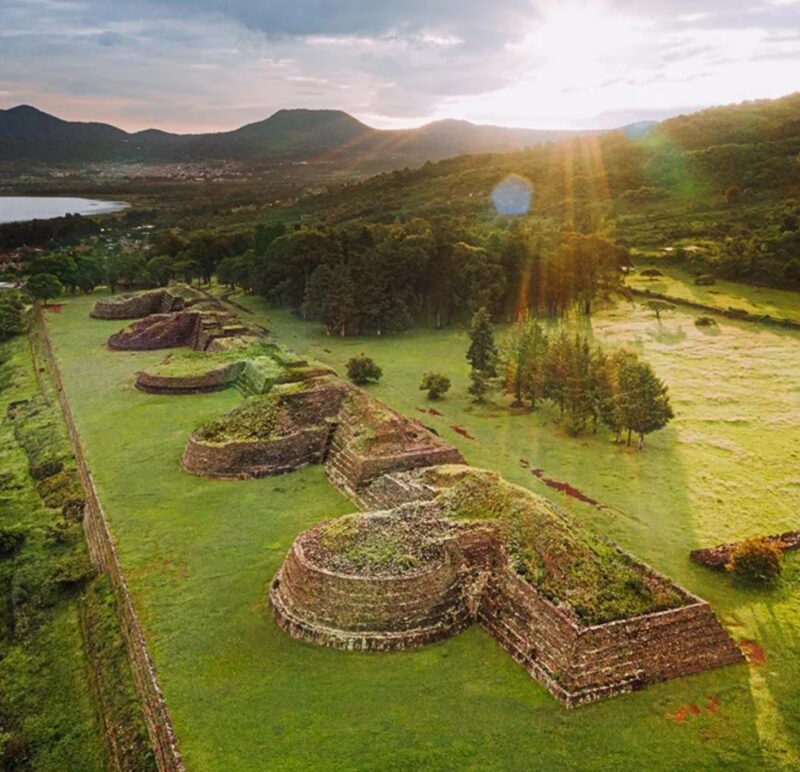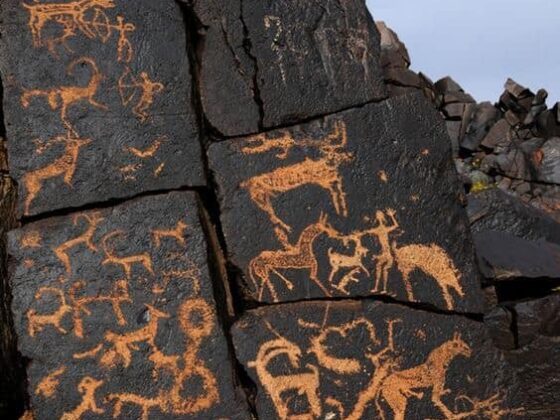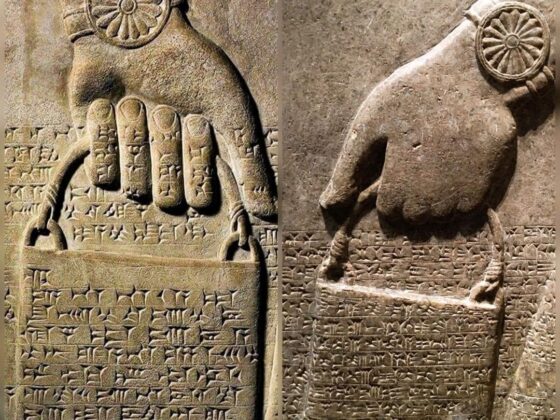In the heart of Michoacán, Mexico, overlooking the shimmering waters of Lake Pátzcuaro, stand the enigmatic pyramids of Tzintzuntzan.
These ancient structures, known as yácatas, are silent sentinels of a forgotten empire that once rivaled the Aztecs in power and sophistication. The Purépecha, also known as the Tarascans, built these monuments as the centerpiece of their imperial capital, leaving behind a legacy of architectural prowess and cultural significance.
The Rise of Tzintzuntzan
Tzintzuntzan, whose name poetically translates to “Place of the Hummingbirds,” emerged as the capital of the Purépecha Empire in the 14th century. The city’s strategic location on the shores of Lake Pátzcuaro provided not only sustenance but also a natural defense against invaders. As the empire expanded, Tzintzuntzan grew into a thriving metropolis, home to skilled artisans, powerful nobles, and the revered Cazonci, the Purépecha ruler.
The decision to establish Tzintzuntzan as the capital was not arbitrary. It was the culmination of a political and military strategy laid out by Taríacuri, the visionary leader who set the foundations for the Purépecha Empire. His successors, particularly Hiripan and Tangáxuan I, further consolidated power in Tzintzuntzan, transforming it into the administrative and religious hub of their burgeoning state.
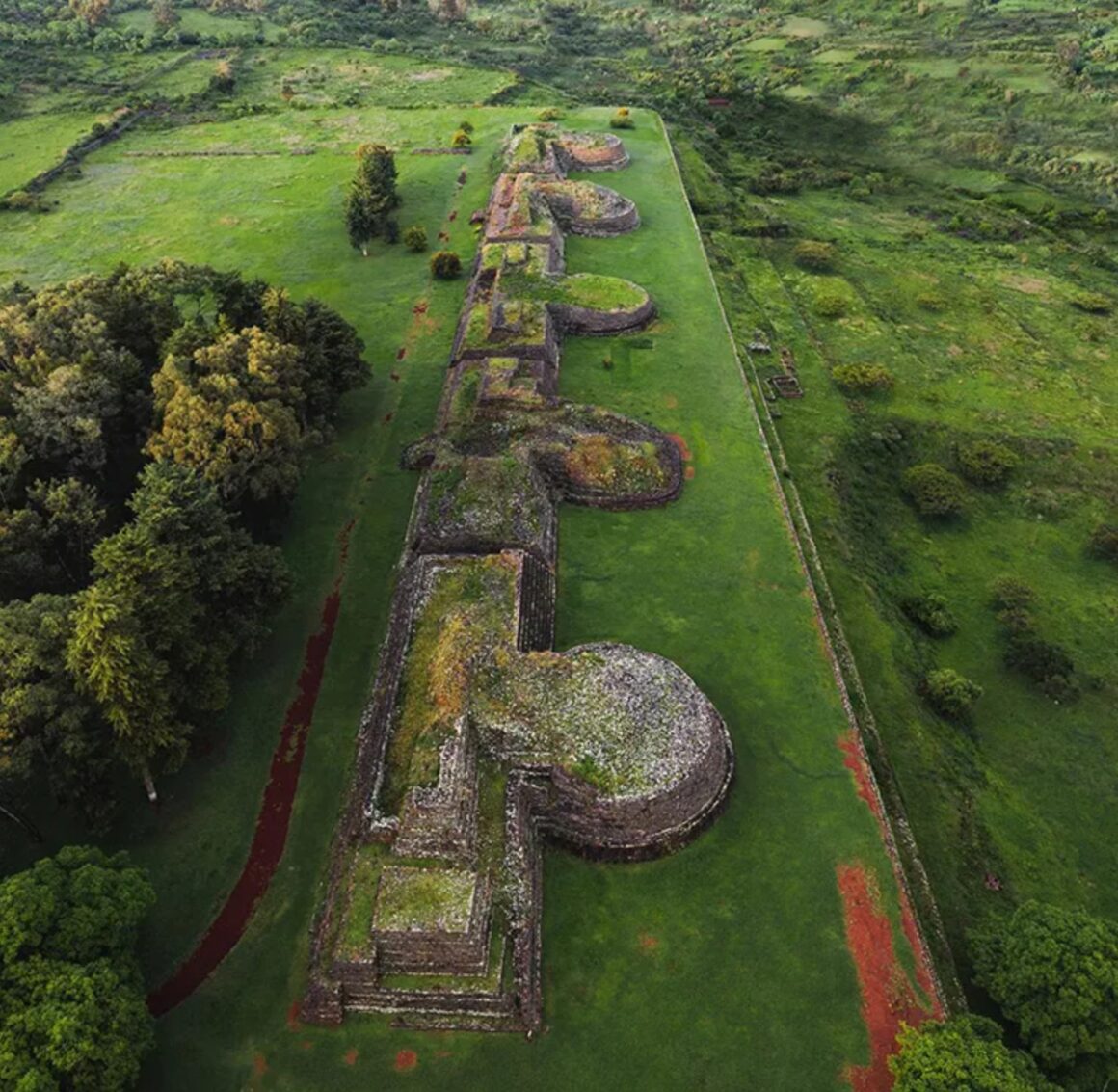
Architecture of Power
The yácatas of Tzintzuntzan are a striking departure from the typical Mesoamerican pyramid design. Instead of the familiar stepped pyramids seen in Aztec and Maya ruins, the Purépecha constructed their ceremonial platforms in the shape of the letter “T”. This unique architectural style is not only visually distinctive but also laden with cultural and religious significance.
The site consists of five yácatas, each measuring approximately 30 meters in length and rising to a height of about 10 meters. These structures are aligned on a vast platform that stretches over 400 meters along the hillside, offering a commanding view of Lake Pátzcuaro below. The yácatas were constructed using a combination of earth, rubble, and faced with carefully cut stones, demonstrating the Purépecha’s mastery of engineering and stonework.
At the base of each yácata, archaeologists have uncovered evidence of elaborate staircases that once led to the flat tops where religious ceremonies were conducted. The spaces between the yácatas formed plazas, likely used for gatherings and rituals that were central to Purépecha religious and political life.
Religious and Political Significance
The yácatas were more than mere architectural marvels; they were the physical embodiment of Purépecha cosmology and political power. Each structure is believed to have been dedicated to a specific deity in the Purépecha pantheon, with the central yácata likely reserved for Curicaueri, the sun god and patron of warriors.
The religious ceremonies conducted atop these pyramids were intrinsically linked to the legitimacy of the Cazonci’s rule. The Purépecha believed that their rulers were divine intermediaries, responsible for maintaining cosmic order through ritual and sacrifice. The yácatas, therefore, served as the stage upon which the Cazonci performed his sacred duties, reinforcing his authority over both the earthly and spiritual realms.
Engineering and Astronomical Alignment
Recent studies have suggested that the layout of the yácatas may have astronomical significance. The alignment of the structures appears to correspond with certain celestial events, such as solstices and equinoxes. This alignment would have allowed the Purépecha priests to track the changing seasons and agricultural cycles, further cementing the connection between the heavens, the earth, and the empire’s prosperity.
The construction of the yácatas also showcases the Purépecha’s advanced understanding of engineering principles. The structures have withstood centuries of weathering and seismic activity. The use of a rubble core with a stone facing not only provided stability but also allowed for efficient construction, enabling the Purépecha to erect these massive monuments relatively quickly.
Artistic Embellishments
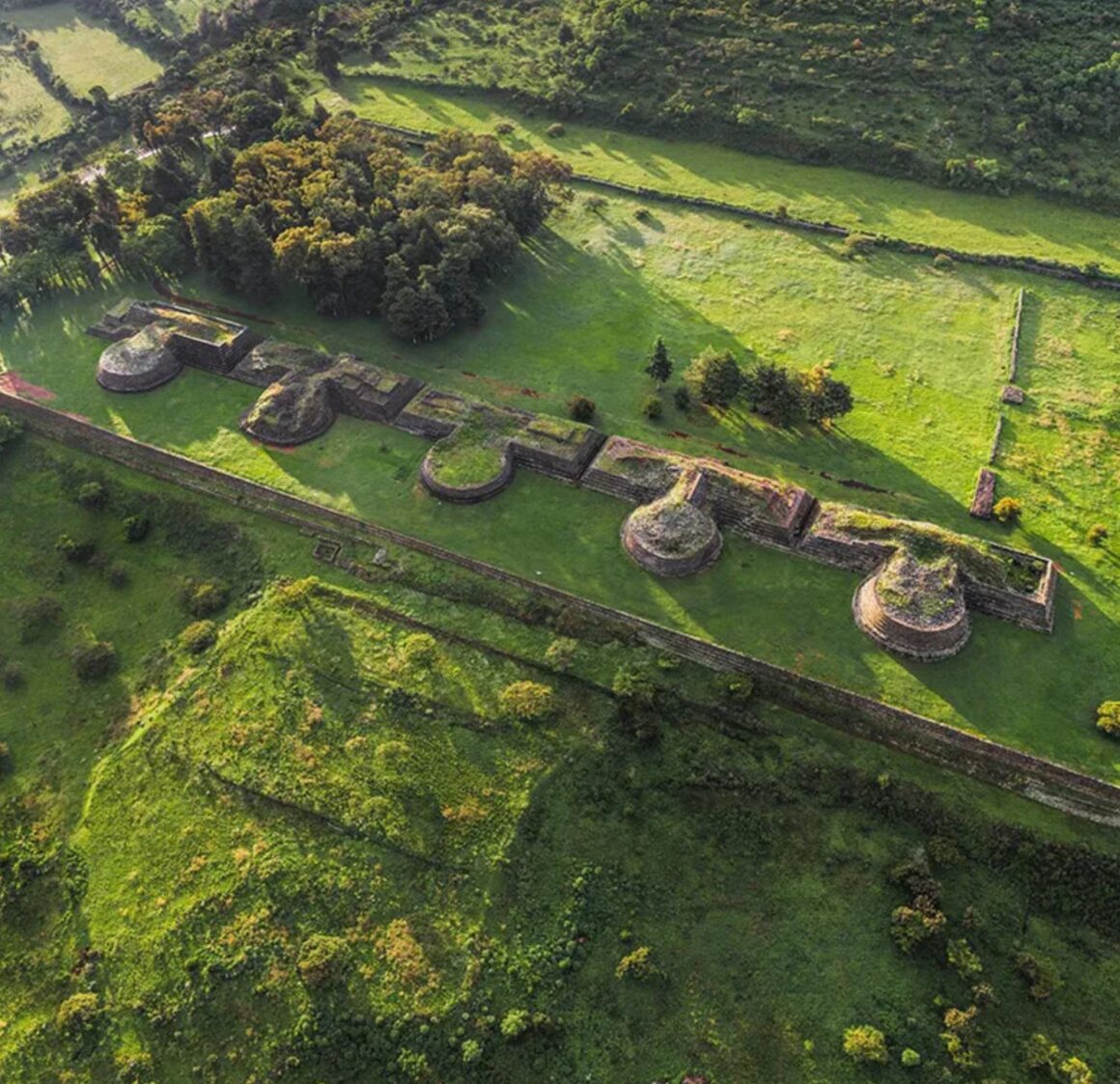
While much of the original decoration has been lost to time, archaeological evidence suggests that the yácatas were once adorned with intricate carvings and vibrant paint. The Purépecha were renowned for their metalworking skills, particularly in copper and gold, and it’s likely that metal ornaments once graced these sacred structures.
One of the most distinctive features of Purépecha art was their mastery of featherwork. The empire’s artisans created stunning mosaics using hummingbird feathers, a craft that was highly prized throughout Mesoamerica. It’s possible that during important ceremonies, the yácatas were decorated with these dazzling feather mosaics, creating a spectacle of color and light that would have been visible for miles around.
The Purépecha Empire at Its Zenith
The construction and maintenance of the Tzintzuntzan ceremonial center coincided with the golden age of the Purépecha Empire. Between 1350 and 1520 CE, the empire reached its territorial peak, stretching from the Pacific coast to the Lerma River Valley. This period, known as the Tariacuri phase, saw the Purépecha emerge as a dominant force in Mesoamerica, rivaling even the mighty Aztec Empire to the east.
The empire’s success was built on a foundation of military might, technological innovation, and shrewd diplomacy. The Purépecha were skilled metallurgists, giving them a significant advantage in warfare. Their weapons and armor, crafted from copper and bronze, were superior to the obsidian-edged weapons of their rivals. This technological edge, combined with a well-organized military and an extensive network of spies and diplomats, allowed the Purépecha to maintain their independence and expand their influence.
Daily Life in Tzintzuntzan
While the yácatas dominated the skyline of Tzintzuntzan, the city itself was a bustling metropolis. The population, estimated to have been in the tens of thousands, lived in neighborhoods surrounding the ceremonial center. The city was laid out in a grid pattern, with wide avenues connecting residential areas, markets, and administrative buildings.
The social structure of Tzintzuntzan was highly stratified, with the nobility residing closest to the yácatas. These elites lived in large, multi-room compounds, often decorated with murals and equipped with private steam baths. The common people, including artisans and farmers, lived in simpler dwellings on the outskirts of the city.
Tzintzuntzan was not just a political and religious center but also a hub of commerce and craftsmanship. The city’s markets would have been filled with goods from across the empire and beyond, including obsidian tools, copper implements, fine textiles, and exotic feathers. The sound of metalsmiths hammering copper, potters shaping clay, and featherworkers assembling intricate mosaics would have filled the air, creating a vibrant urban atmosphere.
Resistance and Resilience
One of the most remarkable aspects of the Purépecha Empire was its ability to resist Aztec expansion. While other Mesoamerican states fell to the military might of Tenochtitlan, the Purépecha successfully defended their borders. This resistance became a point of pride for the Purépecha people, a legacy that would endure long after the fall of both empires.
The conflict between the Purépecha and the Aztecs came to a head in the late 15th century when both empires were vying for control of the resource-rich regions between their territories. In a series of battles, the Purépecha not only held their ground but also inflicted significant defeats on the Aztec forces. This military success was due in part to the superior metallurgy of the Purépecha, but also to their strategic use of the mountainous terrain and their highly organized military structure.
The Twilight of an Empire
The arrival of the Spanish conquistadors in the early 16th century marked the beginning of the end for the Purépecha Empire. Unlike the violent conquest of the Aztecs, the submission of the Purépecha to Spanish rule was initially more peaceful. In 1525, the last Cazonci, Tangáxuan II, pledged allegiance to the Spanish Crown without a fight, perhaps hoping to preserve some autonomy for his people.
However, this relative peace was short-lived. In 1530, the Spanish conquistador Nuño de Guzmán, known for his brutality, entered Michoacán. Guzmán executed Tangáxuan II, plundered the region, and unleashed a wave of violence that devastated the Purépecha people and their culture. The yácatas of Tzintzuntzan, once the proud symbols of Purépecha power, were abandoned and fell into ruin.
Rediscovery and Preservation
For centuries, the yácatas of Tzintzuntzan lay forgotten, slowly reclaimed by the earth. It wasn’t until the early 20th century that serious archaeological work began at the site. These efforts revealed the true extent and significance of the Purépecha capital, sparking renewed interest in this often-overlooked civilization.
Today, the archaeological zone of Tzintzuntzan is protected and open to visitors. While much of the original grandeur has been lost, the remaining structures still inspire awe and wonder. The site offers a tangible connection to a civilization that, despite its power and sophistication, was nearly lost to history.
Legacy and Modern Significance
The legacy of Tzintzuntzan and the Purépecha Empire extends far beyond the archaeological remains. For modern Purépecha people, the site is a powerful symbol of their ancestral heritage and resilience. In recent decades, there has been a resurgence of interest in Purépecha culture, language, and traditions, with Tzintzuntzan playing a central role in this cultural revival.
The site has also become an important focus for archaeological research, offering insights into pre-Columbian urban planning, religious practices, and political organization. The unique architecture of the yácatas continues to intrigue scholars, prompting new theories about their construction and purpose.
